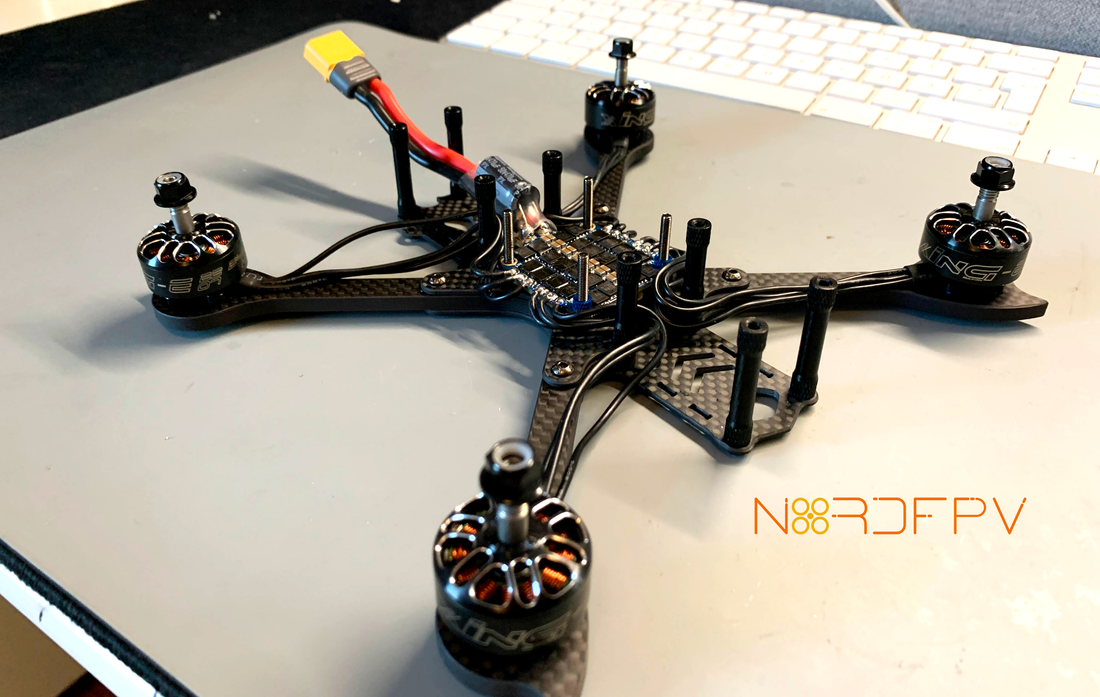
Repairing my 5” drone for the first time
Share
After having fun with the Tinyhawk, and crashing it sometimes, enough times to break the camera connector, I decided I needed to get into the 5” world, and with a lot of ignorance I went to buy a second hand one.
I ended up buying a racing 5”, diatone, and let me say it since now, way too much power for a beginner.
Easy to guess what happened not very long after I got it. It needed repairing since I crashed a few times more.
And here started yet another journey in the FPV world.
It’s almost inevitable to have to get your hands “dirty” and get to change cables and pieces on a drone you own, unless you fly very very carefully, but then it may go against the fun side of the hobby, right?
The first thing I noticed is that I was not prepared in terms of tools to get into fixing anything related to a drone.
After spending some time in the bench, this is a list of item I think anyone that want to fix a drone should have:
- Soldering iron
- Solder
- Flux
- Heat shrink tubes
- Silicone wires
- Assorted mix of nuts and screws
- Multimeter
- Smoke stopper
- Screw drivers
It may sound silly, but having the right tools makes the task much more fun, and a few that made a difference for me were the screw drivers, and the soldering iron.
In the past I have always had one of these sets where you can change the tip of the screw driver, until I found these ones that I have in the shop (LINK) which are ready to be used, and you don’t need to fiddle with tips when you need it. They are also very light so it’s ok to bring with you in your FPV bag when you go to the field in case you need to tighten a screw.
The D60B Iron Solder was a good surprise as well for me. In the past I had much bigger, bench style soldering stations, which don’t get me wrong, are perfectly fine. But this D60B is portable!, you can get it with you anywhere easily in your FPV bag, and you can power it with one of your LiPO. It has a digital screen where you can control the temperature to keep your electronics safe, which is better even than my bench solder station which has just a knob and some guidelines for temperature, and last, it goes to the desired temperature in no time, like just 10 - 15 sec if you are using the right power supply.
Most of the other tools are kind of easy to find in any hardware store, which is the reason why I haven’t focused much on bringing them to the shop, but there are two exceptions to that: Heat shrink tubes and screws.
I decided to bring some heat shrink tubes because first they are super useful, there are so many ways you can attach your receiver antennas, or add some shrinking tube to the cap to hold it close to the power cable, or such, and then, I bought a set that has different colors, which let you give some customisation to your machine.
The second exception here are screws. Yes you can find them in different places, but it’s like you are in a hunt for the right size, type, and material. I had to buy a few different boxes from different places to make sure I had home what I wanted to have, and here I have an idea of making my own NordFPV box of screws with the most typical ones to build/fix your drones. Hope I get to make that reality soon!
For many, repairing and changing pieces is as big of a hobby as flying. Some have quitted the hobby because they think they’ve spent too much time on the bench and too little flying. For me it’s fun to spend a few hours playing around with the guts of a drone, and the satisfaction when it’s ready, the realisation that you have made that thing, it’s just great.
I guess it is just about interest, having steady hands, good eyes or some magnifier, practicing in something else before getting into your drone, and as always practicing a lot. After a little while it’s easy to realise it’s not that difficult, there’s such a big amount of videos on youtube teaching you to do things steps by step, but in all honesty it takes time.
The only advice I can have for people starting with this is, don’t rush, make sure you have the right tools for the work, and make sure you have your diagrams at hand, you will need them to do a good job.
Happy flying!
